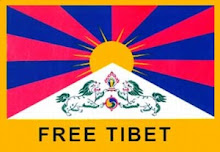 «No One Knows About Persian Cats is a film from Iran that blurs the line between documentary and drama. Briefly put, the film follows Negar and Ashkan, indie pop musicians trying to put together a band to play danceable pop/rock in an '80s American new wave style. Since Western music is outlawed in Iran, the actors, musicians, and filmmakers put themselves at considerable risk while making the film. (People can receive 80 lashes and a fine of $2,000 U.S. for possessing Western DVDs and CDs.) The music in the film hints at varied Western and Persian styles, and shows that the underground scene in Tehran is healthy, despite the official repression. Hamed Seyed Javadi sings an emotional power ballad that blends metal guitar pyrotechnics, Persian scales, and his ululating Farsi vocals. Negar and Ashkan make dance-pop as Take It Easy Hospital and contribute four tracks with both English and Farsi lyrics, including the bright and bouncy keyboard-heavy tracks "Human Jungle" and "Me and You" and Negar's affecting solo ballad "My Sleepy Fall." Rana Fahran sings the jazzy Farsi torch song "Mast-e Eshg" (Drunk with Love) with a smoldering sexuality while the band lays down a subdued Latin-flavored groove that brings to mind Sade. The Free Keys grind out "Dreaming," a guitar-heavy thrash anthem; Mahdyar Aghajani and Bahman Ghobadi combine electronica and traditional music on a short rap interlude; the Yellow Dogs play garage meets surf rock on "New Century"; and Ash Koosha (Ashkan) shows off his guitar prowess on the ambient instrumental "They Sing." Interestingly enough, most of these musicians don't dream of escaping to the West and making it big. They're struggling for the right to play their music in Tehran, a town where even playing traditional Persian music can land you in jail if the audience includes men and women grooving together.»
«No One Knows About Persian Cats is a film from Iran that blurs the line between documentary and drama. Briefly put, the film follows Negar and Ashkan, indie pop musicians trying to put together a band to play danceable pop/rock in an '80s American new wave style. Since Western music is outlawed in Iran, the actors, musicians, and filmmakers put themselves at considerable risk while making the film. (People can receive 80 lashes and a fine of $2,000 U.S. for possessing Western DVDs and CDs.) The music in the film hints at varied Western and Persian styles, and shows that the underground scene in Tehran is healthy, despite the official repression. Hamed Seyed Javadi sings an emotional power ballad that blends metal guitar pyrotechnics, Persian scales, and his ululating Farsi vocals. Negar and Ashkan make dance-pop as Take It Easy Hospital and contribute four tracks with both English and Farsi lyrics, including the bright and bouncy keyboard-heavy tracks "Human Jungle" and "Me and You" and Negar's affecting solo ballad "My Sleepy Fall." Rana Fahran sings the jazzy Farsi torch song "Mast-e Eshg" (Drunk with Love) with a smoldering sexuality while the band lays down a subdued Latin-flavored groove that brings to mind Sade. The Free Keys grind out "Dreaming," a guitar-heavy thrash anthem; Mahdyar Aghajani and Bahman Ghobadi combine electronica and traditional music on a short rap interlude; the Yellow Dogs play garage meets surf rock on "New Century"; and Ash Koosha (Ashkan) shows off his guitar prowess on the ambient instrumental "They Sing." Interestingly enough, most of these musicians don't dream of escaping to the West and making it big. They're struggling for the right to play their music in Tehran, a town where even playing traditional Persian music can land you in jail if the audience includes men and women grooving together.» Link in comments
































